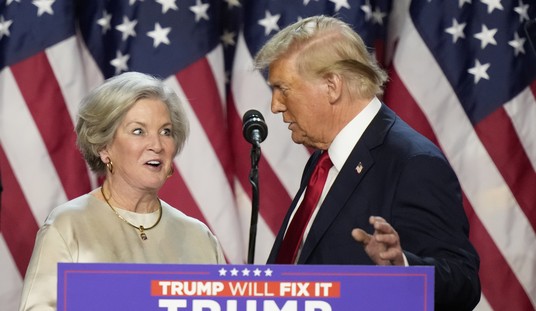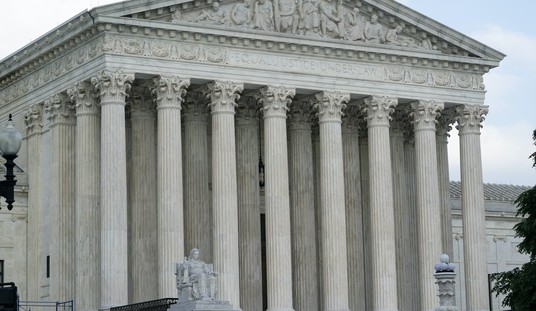I love everything about space, which is one of the reasons why I became a Marine Corps Aircrewman. Needless to say, I was very excited about President Trump’s executive order to reactivate the National Space Council, with Vice President Mike Pence as its new chairman.
The first meeting was conducted on Thursday and included not only government and military, but also new and legacy space companies, including SpaceX, Boeing, Sierra Nevada, Lockheed Martin and, Blue Origin.
As exciting as the prospect of another moon landing or a Martian expedition are to me, I am also no longer a wide-eyed child staring at Saturn V rockets at Cape Kennedy. My experience in the Armed Forces has taught me that government’s involvement can sometimes lead to operational concerns that can potentially harm national security.
When conducting missions that will impact humanity’s future, we must always look to the past and learn from our previous ups and downs. In the case of space policy, we thankfully have more successes than failures to review. One of humanity’s greatest accomplishments to date has been landing a man on the moon — not once, but 6 times — and successfully returning the Astronauts home safely.
Thanks in part to the guidance of this very council, which was then named the National Aeronautics and Space Council, numerous companies – large and small – participated in the moon landings. All in all, 10 different ones helped build the individual parts. What would have happened if NASA instead gave every contract to large industry giants or a single player that was beloved by the media? Thankfully, we won’t ever have to find out.
Today, some would like to stray away from the lessons of the aerospace history books and see new Silicon Valley start-ups like SpaceX more or less monopolize the industry. NASA should ensure that all capable companies remain involved in the process, and the best manufacturer for each specific mission should always be chosen — whether the company is a legacy one such as Lockheed-Boeing or an upstart like SpaceX and Blue Origin. Failing to preserve competition will not only put our national security potentially at risk, but also our astronauts’ safety.
I learned a lot by serving 12 years in the military prior to being medically retired. I saw first-hand how legacy contracting and single-source supply issues risk soldiers’ lives. Thankfully, soldiers are creative and often figure ways around these issues. If my rifle jammed because it wasn’t designed to shoot in the sand, I could improvise by chambering a round by hand or finding a dry lubricant. However, sending humans into space is a far different matter. Astronauts don’t have that luxury, as the Columbia and Challenger disasters have shown. One simple O-ring or a small crack in a tile will cause us to build yet another memorial at Arlington National Cemetery.
In recent years, even the military has come to its senses and realized the need for competition, comparable to how NASA gradually began to disapprove of having a single provider for space launches. The best example of this is the Army Authorized Protective Eyewear List (APEL). The Army approved 7 manufactures and dozens of varieties of eye protection. Each unit, soldier, and mission can now use any of the products on the list, allowing those on the mission and those planning the mission to select the best gear for that specific mission.
Contrast this competitive approach to the direction some in the media would like to see the space industry go in. Would rashly deeming SpaceX or any other manufacturer the “preferred” company, rather than determining which is best suited for each specific mission or task, be in the best security interests of the astronauts? I don’t think so.
SpaceX is innovative, and often very deserving of government contracts, but it also seems to be growing a bit too fast. For all its successes over the past few years, it has also had some spectacular failures, including an unsuccessful Falcon 9 blast-off last year that brought a $200 million Facebook Internet satellite down to pieces.
While SpaceX has also had successful launches, and in some cases saved costs, how much is a 4-man crew worth? Shouldn’t the people building the rocket that we strap human beings to have a stellar success and safety rate?
Many new firms struggle early on, especially when their goals are intergalactic. By now, we should have already learned the lesson of 18F, when promises of innovative simplification really led to $31.6 million in losses and significant data breaches. Like most of America, Silicon Valley types often engage in over-expectation.
I do not mean to downplay the value of new innovators like SpaceX, which are making the industry far more cutting edge. Washington bureaucrats should always listen to these great companies’ opinions; however, they should also temper them with ones that have decades of experience in space technology.
Like Vice President Pence, I too fell in love with space at a young age. NASA was in downtown Cleveland; John Glenn was my Senator and a hero of mine. I admit being a Trekkie and loving Star Wars. I still remember watching Star Trek: The Next Generation and laughing because I never thought people would walk around with tablets everywhere. Humanity’s future rests in the stars.
But to further unlock and advance this system that we have all come to love, we must prioritize America’s future and the safety of our brave astronauts by carefully analyzing and selecting the best technology from the brightest minds – both the old greats of the vice president’s era and the new go-getters that have taken the industry by storm.














Join the conversation as a VIP Member